Walk through the chilly passages in the bock casemates, also known as casemates du bock. You’ll feel like you’ve traveled back in time as you hear the sound of footsteps and the clash of swords, just like the warriors who once used these underground tunnels to protect their city. It’s an adventure waiting for you.
As you move around these rooms, imagine what happened here before. Think of the tactics they discussed and the quiet talks that occurred under the torchlight, along with the strong will of the guards stopping enemies. Keep exploring.
Even though the Bock Casemates are old, they show how strong and enduring Luxembourg is. You can see this because they were a safe place in World War II, and today they’re a symbol of the city’s toughness. Now, they still stand tall.
Continue reading to uncover the fascinating history of the Bock Casemates, explore their architectural ingenuity, and discover the captivating stories that lie hidden within their depths.
Prepare to be amazed by the ingenuity of medieval engineering, the unwavering spirit of Luxembourg’s defenders, and the enduring legacy of these remarkable underground fortifications.
Table of Contents
Overview of the Bock Casemates
Originally, Luxembourg City’s rocky cliffs harbored basic tunnels and chambers cut beneath them, known as Bock.
The fortress, now an underground marvel, was a recent creation. Heretofore, these prehistoric chambers were very plain yet incredibly vital. More segments were progressively supplemented to reinforce and expand the fortress. Consequently, it offered protection during dissensions with rivals coveting control.
Since it’s been there forever, the Bock Casemates in Luxembourg City are what it’s known for, keeping us safe and clinging on through time. Nowadays, it’s mainly an interesting spot to go and think about the long-ago past. I love visiting it.
Bock Casemates : Legend of the beautiful Melusina
It is undeniably said that Sigfried’s partner, Melusina, lived with him in a strong castle.
Melusina demanded that Sigfried refrain from seeing her on a specific day and night every week as part of their marriage agreement.
On one of those days, Sigfried watched Melusina take a bath while spying on her through the door’s keyhole out of curiosity. He was surprised to see Melusina’s fish-like tail. Melusina vanished into the rushing river waters the moment she sensed Sigfried’s eyes on her, and no one ever saw her again.
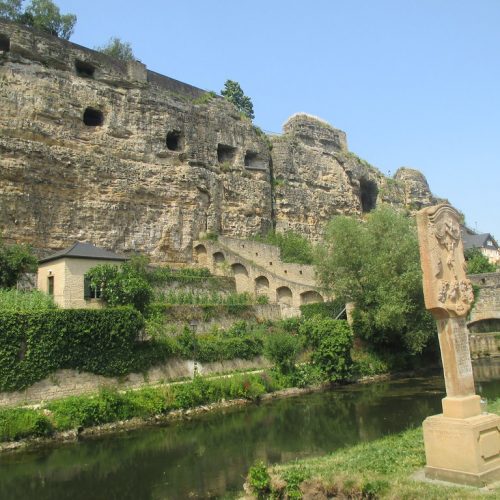
Bock Casemates: Historical Significance
The Bock Casemates were a stronghold for centuries after the Romans first used them in the first century AD.
The Franks fortified them in the 5th century AD. Used for imprisonment and storage, they were operational during the Middle Ages.
Under the duress of World War II, they became shelters for Luxembourg City’s citizens.
They have been employed for various purposes throughout history.
Undeniably, lots of visitors come to see the Bock Casemates, which happens to be a special spot that the educators thought should be protected.
Those tunnels kind of display the story of the city, where so much has happened over time with loads of different events.
It’s really cool history to explore.
Construction and Design
Between the 10th and 17th centuries, the Bock Casemates were constructed, providing a grand tale of history echoed in its very walls.
Over time, nevertheless, the earliest sections that were erected in the 10th century underwent considerable enlargement and fortification. In the 17th century, they were notably renovated.
Architectural Features of The Bock Casemates
The casemates consist of many passageways and rooms with carved walls. Protective measures like openings for guns and arrows and air ducts were added to these passageways, despite their basic construction.
Over the years, they have never been simplified.
They are also notable for their use of innovative construction techniques.
For example, the builders used a technique called “squinching” to create arches over square openings. Squinching is a complex technique that requires careful planning and execution.
The use of squinching in the Bock Casemates is a testament to the skill of the medieval builders.
The Bock Casemates are a fascinating and important example of medieval military architecture. They are a reminder of the ingenuity and skill of medieval builders.
Military Role
Defensive Fortifications
The Bock Casemates were used as an essential part of Luxembourg City’s fortifications for many years; a high location provided them with a view that made them very good for protection.
Within them were gun emplacements, arrow slits, and other features that defenders used to fight off attackers; their use continued for centuries. They stand on a high point.
The Bock Casemates served a variety of purposes over time, including protecting Luxembourg City from attacks.
Thereby, in 1443, aggression by the Duke of Burgundy was resisted within the context of the Burgundian Wars; French forces were also opposed by said casemates once again in 1684.
Through the War of the Reunions against the city, this resistance occurred.
World War II shelters
As Luxembourg City’s population sought refuge while the German forces progressively overpowered Luxembourg in 1940, the Bock Casemates offered essential protection. Converted hastily into shelters designed to protect against air assaults, the refuge within the casemates welcomed numerous occupants.
Thousands found solace in this haven, shielded from the aerial onslaughts of the Luftwaffe.
The bombing raids, relentless in their fury, faced the sturdy defiance of the casemate walls.
Safety, a precious commodity, was secured underground for many amidst the tumult of World War II.
Even after the war was over, I went to visit the Bock Casemates because they were a big attraction for tourists.
They had been a really important place during the conflict since they provided a safe place for people to hide, and the German military even used them to run their operations and keep their supplies safe.
Now, they’re open for us all to explore.
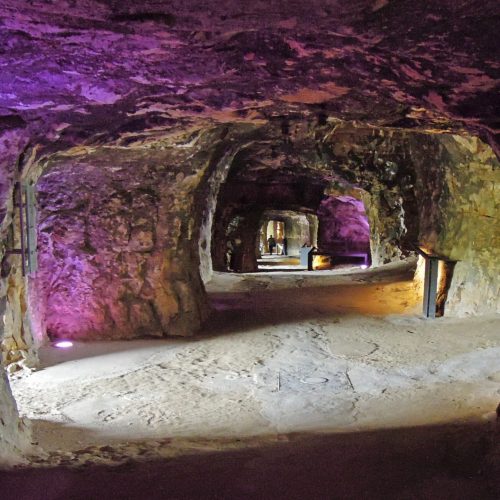
Tourism and Cultural Significance
You won’t believe how the old Bock Casemates military tunnels in Luxembourg City have changed into a really important spot for visitors. Its history, different designs, and the super cool passages under the earth have gotten people from all over the world to come see it. Now, they’re a big part of the city’s story.
UNESCO World Heritage Site
In 1994, the Bock Casemates, the Old Town, and Luxembourg City’s Fortifications were added to the UNESCO World Heritage List. This achievement is undeniably special. It confirms that the ancient military design of the casemates and the way they have continually influenced Luxembourg’s past and its sense of self are exceptionally important.
Popular tourist Destination
You can go on guided tours inside the Bock Casemates, a popular place in Luxembourg for tourist visits. Walking through the twisty tunnels, you’ll learn how people protected themselves over hundreds of years. Plus, they host different events and shows that make your visit even more special.
Cultural Events and Exhibitions
The Bock Casemates provide a unique backdrop for a variety of cultural events and exhibitions. From historical reenactments to art installations, these events bring the casemates to life, showcasing their versatility and adaptability.
The casemates have hosted concerts, theatrical performances, and even fashion shows, demonstrating their ability to accommodate a diverse range of cultural expressions.
This blend of historical significance, architectural intrigue, and cultural vibrancy has solidified the Bock Casemates as a cherished landmark in Luxembourg City, attracting both locals and visitors alike.
The casemates continue to serve as a testament to the city’s resilience and adaptability, embodying its rich tapestry of history and culture.
Bock Casemates : Pricing
- Adults: Regular Price: €8
- Students and Seniors: Regular Price: €6.5
- Children (4 to 12 years old): Regular Price: €4
- Children under 4 years old: Free of charge Regular Price: €0
Where To Find The Bock Casemates
Montée de Clausen, L-1343 Grund Luxembourg
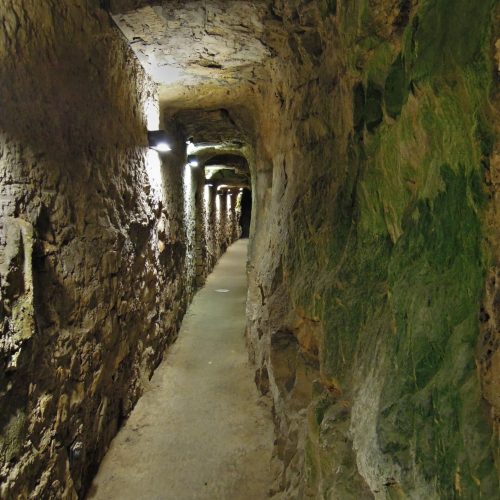
Here is what awaits you when visiting
Now it’s your turn to go down several flights of steps and walk along about 10.5 miles of dusty tunnels beneath an old city that used to be really important for making sure the buildings up top wouldn’t fall over.
People have been checking out these places where soldiers used to hide from bombs during World War II since 1933, even though nobody could go there for a while to keep them from getting ruined.
You can see both the main tunnels where a lot of people walk and also the dead ends—these smaller paths where you just turn around and head back. They dug these bits of the tunnels, sometimes more than a hundred feet under the ground.
However, where you’re going to wander wasn’t knocked down because it was holding up the city above.
Bock Casemates: Frequently Asked Questions
What are the Bock Casemates?
The Bock Casemates are a series of underground tunnels and fortifications located in Luxembourg City. They were originally part of the fortress built on the Promontory in Luxembourg, known as the Gibraltar of the North.
When were the Bock Casemates constructed?
The construction of the Bock Casemates dates back to the year 963, making it a significant part of the Old Town and the city’s defense. The site has been fortified and expanded over the centuries.
How can I visit the Bock Casemates?
To visit the Bock Casemates, you can explore Luxembourg’s World Heritage site and take a guided tour of the underground tunnels and fortifications. The site offers breathtaking Views of the City and an Archaeological Crypt.
Who built the Bock Casemates?
Count Siegfried, the Austrians in the middle of the 18th century, and Engineer Vauban in the 1680s were just a few of the rulers and engineers who built and reinforced the fortifications at the Bock Casemates.
What is the significance of the Bock Casemates?
The Bock Casemates hold historical and strategic importance, as they were used for fortified gunemplacements and underground tunnels and served as a defensive stronghold for the city of Luxembourg.
What can I expect to see at the Bock Casemates?
During your visit to the Bock Casemates, you can explore the Crypt, Didactic Antechamber, and the Gallery, which contain a series of underground tunnels, passages, and chambers that were carved out of the rock centuries ago.
You can also see the remains of the old fortress and defensive walls, as well as stunning views of the surrounding landscape from the top of the Bock Promontory.
Additionally, there are informational exhibits and displays that provide historical context and details about the construction and use of the casemates.
Overall, you can expect to see a combination of historical architecture, natural rock formations, and informative displays during your visit to the Bock Casemates.
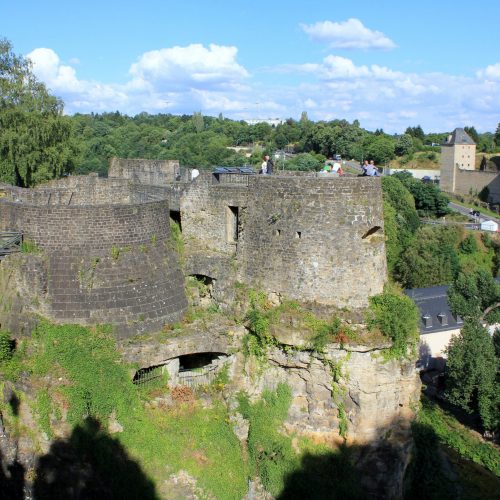
Conclusion
Way back, there was a maze of tunnels under Luxembourg City where we could get lost and find secret rooms. People used them to protect themselves and be really smart about it, showing just how strong and special my city was. It was right below all the busy roads.
Summary of Key Points
- The Bock Casemates were constructed over centuries, serving as a vital component of Luxembourg City’s fortifications.
- They played a crucial role in defending the city against numerous sieges and attacks, demonstrating their strategic importance.
- During World War II, the casemates provided much-needed shelter for the city’s inhabitants, highlighting their adaptability and enduring value.
- Today, the Bock Casemates stand as a UNESCO World Heritage Site, attracting visitors from around the globe eager to explore their captivating history and intricate architecture.
Significance of the Bock Casemates
The Bock Casemates transcend their military past, embodying Luxembourg City’s resilience and cultural heritage. They represent a tangible link to the city’s past, offering insights into medieval warfare, engineering techniques, and the lives of those who once occupied these subterranean spaces.
For archaeologists and historians, the casemates serve as a valuable resource, providing clues about construction methods, materials used, and the daily lives of those who resided within these fortified chambers. Their preservation ensures that these stories continue to be unearthed and shared with future generations.
The Bock Casemates remain an integral part of Luxembourg City’s identity, a reminder of its ability to adapt and overcome challenges. They serve as a symbol of resilience, a testament to the city’s rich history, and an enduring attraction for visitors seeking to delve into its captivating past.

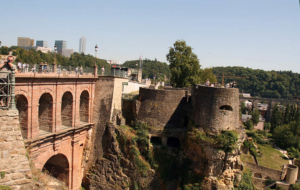
[…] the Bock Casemates provides a glimpse into Luxembourg City’s intriguing history. Generations used this massive […]